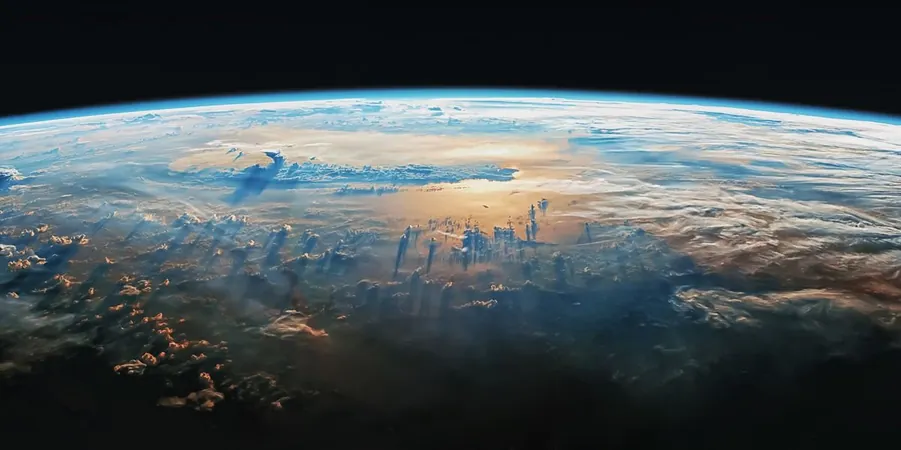
Unearthing the Mysteries: A Lost Tectonic Plate Found in Borneo Could Rewrite Earth's History!
2024-09-21
In an extraordinary scientific breakthrough, researchers have uncovered the remnants of a tectonic plate, estimated to be around 120 million years old, in the dense jungles of Borneo. This astonishing discovery provides not only a glimpse into Earth's distant past but also portrays a narrative that could reshape our understanding of geological history.
Scientists are constantly probing beneath the surface of our planet to unveil secrets that have been buried for eons. From unearthing previously unknown landmasses to exploring vast, hidden oceans beneath the Earth's crust, each finding adds a vital piece to the intricate puzzle of our planet's formation.
The Discovery of the Pontus Plate
The newly named Pontus plate, a long-lost fragment of Earth's crust, was identified through rigorous geological analysis led by Suzanna van de Lagemaat, a graduate geologist from Utrecht University in the Netherlands, and her supervisor, Douwe van Hinsbergen. Their groundbreaking research was sparked by a close examination of geological data from mountain ranges throughout the Asia-Pacific region, highlighting the interconnected nature of Earth's tectonic history.
While examining rock formations in northern Borneo, van de Lagemaat uncovered unmistakable indicators of the ancient Pontus plate. Initially believing she was dealing with remnants of a previously known tectonic formation, she and her team soon realized they had stumbled upon something much more significant. "Our magnetic lab research indicated that our finds were originally from much farther north, revealing they were remnants of a different, previously unknown plate," she explained.
Speculations on the Pontus Plate
Researchers speculate that the Pontus plate, which existed well before the fragmentation of the supercontinent Pangaea, was roughly one-quarter the size of the Pacific Ocean. Reconstructive simulations suggest that it once lay beneath vast waters separating Eurasia and Australia. As Pangaea began to break apart, the Pontus plate was absorbed by surrounding tectonic plates, transporting landmasses like the Philippines and Borneo to their present-day positions.
The Junction Region Research
The Junction Region, where this groundbreaking research took place, is a complex area of tectonic activity that spans from Japan to New Zealand. Van de Lagemaat's study utilized advanced geophysical techniques to map out the intricate movements of these tectonic plates over hundreds of millions of years. This reconstruction provides a dynamic view of Earth's geological evolution, enriching our knowledge of how our planet has transformed throughout the ages.
Importance of Discoveries
As scientists celebrate this remarkable find, the importance of such discoveries cannot be overstated. Each revelation contributes to a more comprehensive understanding of Earth's history, which is pivotal not only for academic pursuits but also for regions that may be impacted by tectonic shifts in the future.
With more findings like these on the horizon, who knows what other secrets the Earth might soon unveil? Stay tuned for further updates as this exciting research continues to unfold!

 Brasil (PT)
Brasil (PT)
 Canada (EN)
Canada (EN)
 Chile (ES)
Chile (ES)
 España (ES)
España (ES)
 France (FR)
France (FR)
 Hong Kong (EN)
Hong Kong (EN)
 Italia (IT)
Italia (IT)
 日本 (JA)
日本 (JA)
 Magyarország (HU)
Magyarország (HU)
 Norge (NO)
Norge (NO)
 Polska (PL)
Polska (PL)
 Schweiz (DE)
Schweiz (DE)
 Singapore (EN)
Singapore (EN)
 Sverige (SV)
Sverige (SV)
 Suomi (FI)
Suomi (FI)
 Türkiye (TR)
Türkiye (TR)